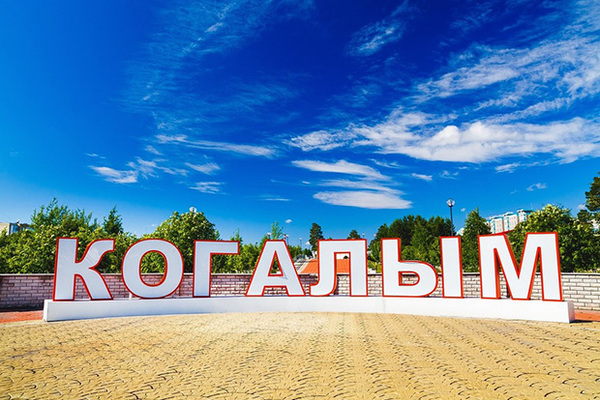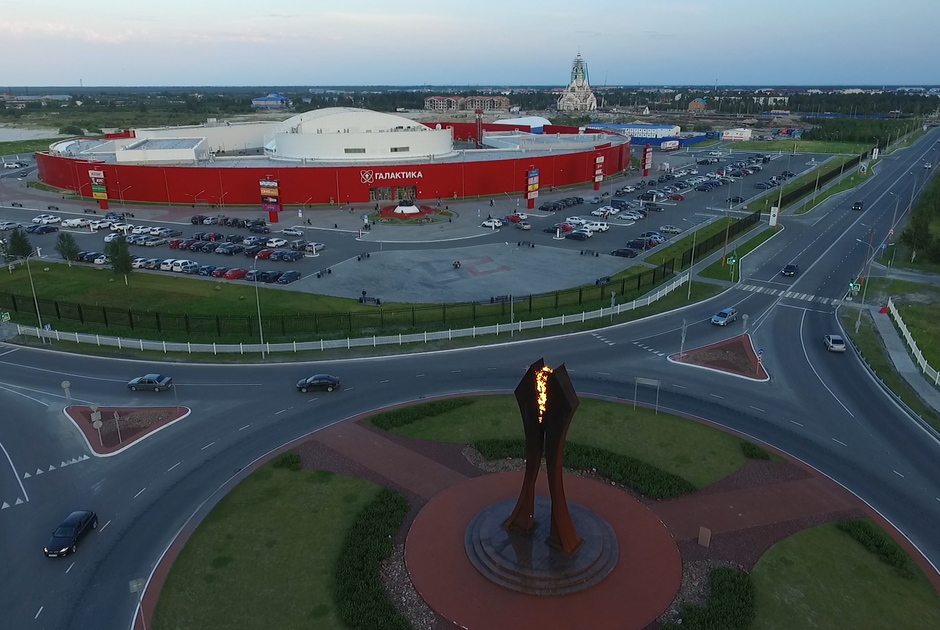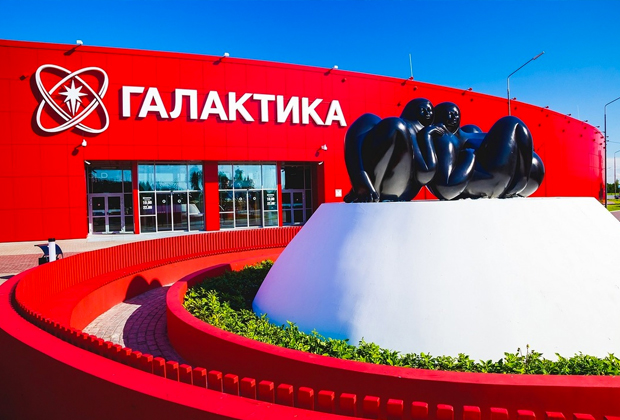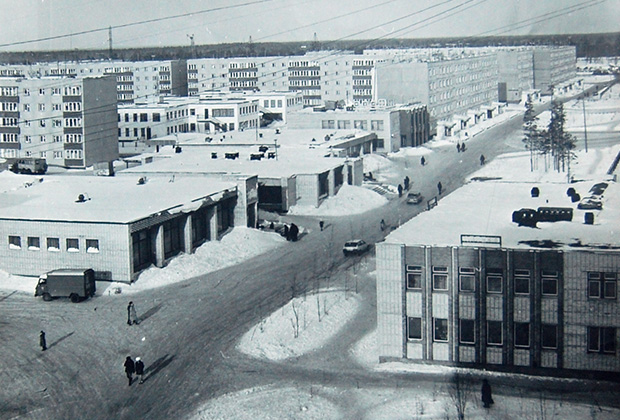The city of Kogalym of the Khanty-Mansiysk administrative district is not like many other cities. Its population is growing, new neighborhoods, shopping centers and cultural centers are being built. Lenta.ru tells why this is happening.
Monotown for living Why the small town of Kogalym is one of the most attractive for living in Russia

Kogalym, located in the Khanty-Mansi Autonomous Okrug, is unlike many other cities. The number and incomes of the population are growing, new neighborhoods, shopping and cultural centers are being built. Lenta.ru tells why this is happening.
Big changes
In 2018, the 65,000th city of Kogalym is waiting for an extraordinary event. A branch of the Maly Theatre, which has not yet been presented outside of Moscow, will open here. Why in Kogalym? The city-forming enterprise helped.
“This is a variant of public-private partnership, because the branch itself is being built by the LUKOIL company, it is building with its own money,” Tamara Mikhailova, general director of the Maly Theater, explains to Lente.ru. She has no doubt that the new scene will have an audience.
“The opening of a full-fledged branch of the Maly Theater in Kogalym will allow its residents to watch plays of the same quality as in Moscow. This event will also open the doors of the theater for young local actors, we plan to hold master classes in the city,” says the theater’s artistic director, People’s Artist of the USSR Yuri Solomin.
According to Tamara Mikhailova, students will be able to show their works at the branch of the Maly Theater in Kogalym, as fourth-year students at the Shchepkinsky Theater School in Moscow usually do. But directly the troupe of the branch will include actors from the Moscow Maly Theater, who will be provided with apartments in Kogalym.

The reconstructed building, which will house the Kogalym branch of the Maly Theater.
Photo: LUKOIL press service
Mikhailova believes that opening a branch in a small town will not only not harm the image of the Maly Theater, but, on the contrary, will increase interest in it. “We were closed for two years and traveled all over the country. In the regions, the troupe has always played the performances that take place on our stage, without making a simplified version, without leaving “with two bags,” she says. When the troupe arrived in Surgut, its inhabitants were amazed.
“We brought Woe from Wit, two trucks with props came with us. People took pictures of costumes, scenery, tonnage of trucks asked. All this was a shock for them, ”Tamara Mikhailova says not without pride.
However, in addition to the theater, there is something to see in Kogalym. The Galaktika Sports and Cultural Complex, also built with LUKOIL funding, houses an oceanarium where visitors can see sharks, rays, piranhas and other fish and marine animals.In addition, the complex has a water park with a wave pool for surfing, as well as cinema halls, restaurants, shops, a bowling alley, a climbing wall, a children's skating rink and a greenhouse of seven gardens representing the flora of various zones of the world.





Cultural and entertainment center Galaktika, the city of Kogalym
Photo: LUKOIL press service
From the dead place to the city of oilmen
But of course it wasn't always like that. In the language of the Khanty, Kogalym means dead place. So it was even before the 70s of the last century, until the construction of the Surgut-Novy Urengoy railway began. In 1976, a tent city was set up on the site of the future city, consisting of twenty tents and a red flag on a flagpole – nothing more. Six months later, a school, a bathhouse, dormitories, residential buildings and other buildings were built. Such was the Kogalymskaya station, the base of the youth taiga landing, the pioneers.
The official status, as well as the name, was assigned to the settlement that arose on August 31, 1976 – then the settlement of Kogalymsky appeared in the documents. Its development proceeded at an accelerated pace, and after 2 years, when the Povkhneft oil production department was organized in the region, the authorities thought about giving Kogalymsky the status of a city. A development plan was developed, new residential buildings and streets began to be built, and in 1985 Kogalym appeared on the map of the USSR.
But, probably, the most important milestone in the history of the city is 1988, when an order was signed to create the Kogalymneftegaz production association, which in 1991 became part of the LUKOIL oil concern, with which the fate of most citizens is connected.

Kogalym. January 21, 1984.
Photo: LUKOIL press service
For children and adults
The whole life of Kogalym revolves around the oil industry, that is, in other words, it is a single-industry town. This type of settlement is practically unique in countries where urbanization took place under the conditions of a planned economy. Enterprises were not created in an urban environment, because it is convenient for business, but on the contrary, the country's leadership decided to build a plant around which a city of its workers grew.
With the collapse of the Soviet Union, the situation has changed: enterprises have private owners who, first of all, tend to be guided by economic benefits. By improving technology, organizations were freed from unprofitable units, which meant a reduction in jobs, as well as the volume of social obligations.
All this led to an outflow of the population – people sought to leave for the mainland. Indeed, what is the point of staying when you even have to travel to other cities for shopping, because there is practically no cash flow in single-industry towns, which makes them unattractive for business.
Today, these communities live almost exclusively on subsidies. The initiatives of local authorities aimed at changing the situation do not meet with enthusiasm from the residents.The money of the owners of city -forming enterprises often does not help – the city requires more and more, and the situation does not change.
Kogalym – an exception to the rules. In 2005, Lukoil signed an agreement on cooperation with the Government of the Khanty-Mansiysk Autonomous Okrug, which was supposed to ensure the development of the territory, and since then the city has been good every year. Moreover, they do not leave Kogalym – the growth of its population is natural. Of the 65 thousand inhabitants of the city, 12 thousand are children.
It is not necessary to rack your head for why this is happening for a long time: so that people do not leave the city, comfortable conditions must be created for them. It is necessary to develop infrastructure, build kindergartens, schools, sports complexes …

Photo: press service LUKOIL
For example, with the support of Lukoil, a new Kloyik-Semikeliki kindergarten was opened in the city, built at the expense of the Our Future Foundation of which the founder of which is the President of the company Vagit Alekperov. The kindergarten is not like typical institutions – there is a gym with new modern simulators, a hydromassage pool, a dental office and a winter garden.
Everything is fine with kindergartens in Kogalym – almost all children from 3 to 7 years old are provided in them in places in them. Soon the issue will be resolved with the abolition of the second shift for schoolchildren – new buildings will be built in the city. The place for one of them has already been determined, and the second will be built by 2022.
With the help of Lukoil, sport is also developing – on the initiative of Vagit Alekperov, in one of Kogalym’s sports complexes, children's groups under the leadership of the trainers of the Spartak football club took place this summer.




